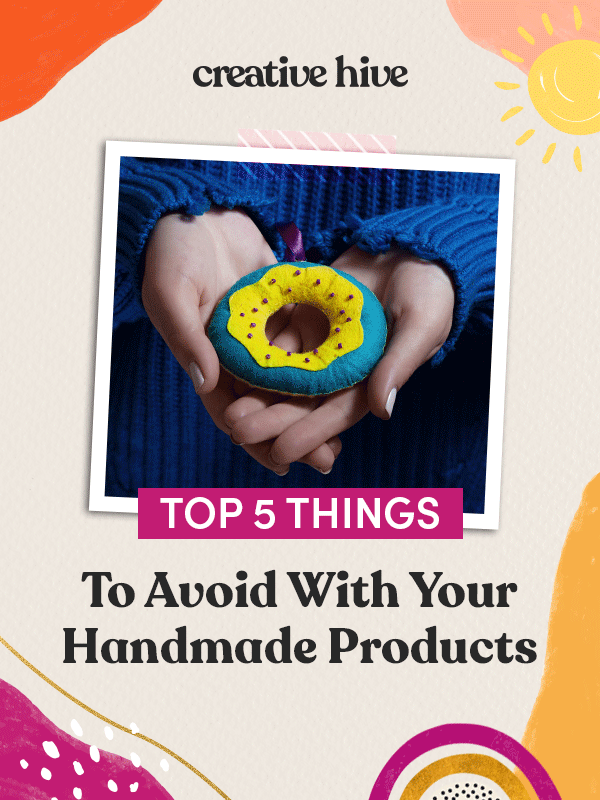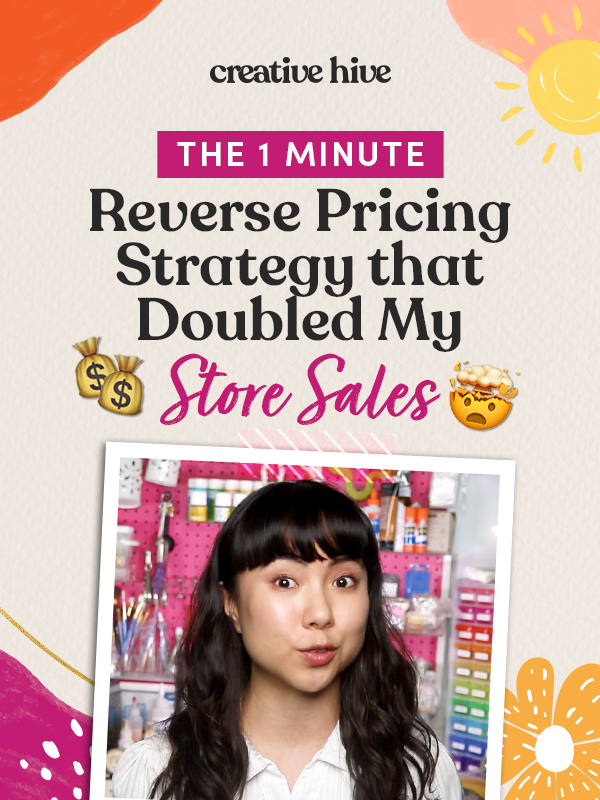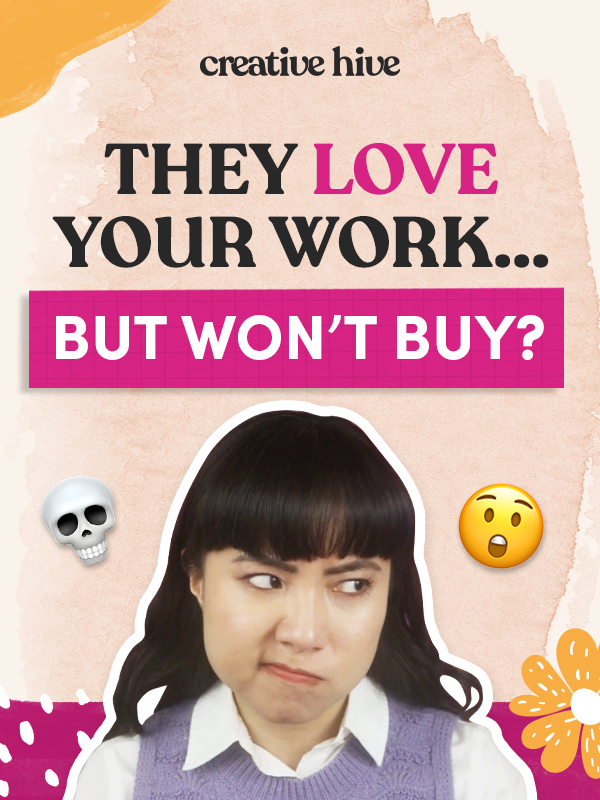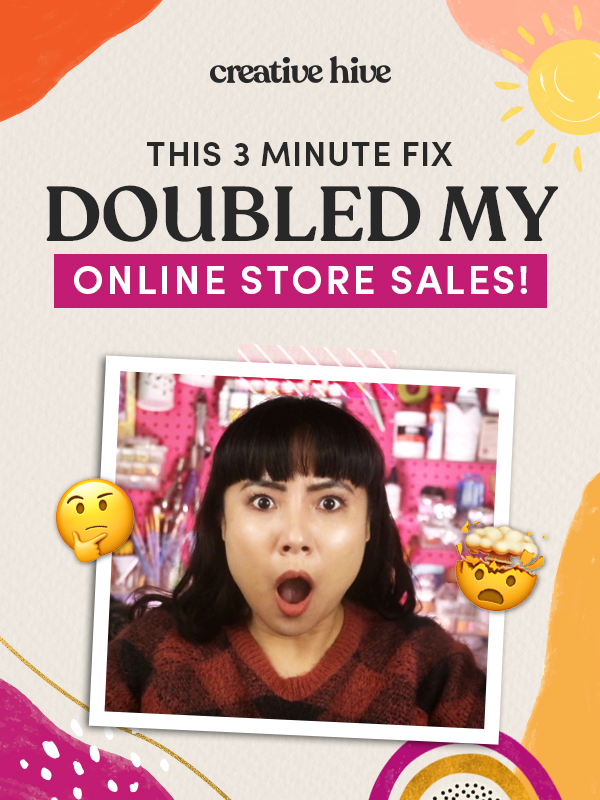Top 5 Things To Avoid With Your Handmade Products
I want to help you build a sustainable, profitable handmade business that makes you consistent income and sales. I only ever teach or recommend marketing, social media, pricing, production and branding tips that I’ve personally used successfully in my own 7-figure handmade businesses.
I'm Mei, from Los Angeles!
Read More
Popular Posts You'll Love
Looking for something?
Categories
starting a business
get more traffic
running a business
make more sales
branding
growing a business
mindset & productivity
podcasts
pricing & money
product photography
reviews
selling on etsy
selling on amazon
social media
selling wholesale
- Facebook0
- Twitter2
- Pinterest11
- 13shares
If you’re not having much success with your handmade business, it might be because of the products you’re selling.
As artists, we want to believe that our work is sellable no matter what, but the hard truth is that that’s not always the case.
When starting a handmade business, it’s important to be able to separate our business from our art, so we can focus on creating products that actually sell.
That’s why today, I’m going to tell you 5 things to avoid with your handmade product.
These are things that make selling or keeping up with business, harder than it’s worth.
If you’re an artist who isn’t selling your work, this won’t apply to you. Get out there and keep creating!
But if you’re trying to build a successful handmade business, take out your notebooks and pencils, because there’s a lot to learn.
My handmade jewelry shop makes $200,000 a year in sales, and today I’m going to share some of the insight from my own experience, that I hope will help you too.
There are 5 key things to avoid with your handmade product.
These are common mistakes that can cause a handmade business to fail pretty quickly.
With all the time and money you’ve put into making this happen, I want to see you succeed!
1. Selling a Product No One Wants
First of all, avoid selling a product with zero demand.
I want you to think about the product you’re selling:
- Does it have competition?
- Is there an existing customer base?
- Is the product in high demand?
If you answered “yes” to these questions, you’re on the right track because you have proof that your product is something customers actually want.
If a customer wants it and you have it, you can sell it.
It’s that easy!
You don’t want to sell a product with no demand.
If your product is the only one of its kind on the market there’s probably a reason.
People simply aren’t interested in it or aren’t looking for it right now.
If they’re not interested in it, they’re not searching for it, and they’re not going to find your business.
Even if they do stumble across your website or Etsy page, a customer’s not going to buy something they don’t have an interest in or a need for.
If you’re selling glass pacifiers for babies, you’re probably not going to get much business.
Make sure that whatever you choose people are interested in it.
If you’re not sure whether your product has demand, look at the most popular products on Etsy, Amazon, social media, and on Google to see what’s trending these days.
Even if your product isn’t the most popular, that’s okay.
Just be sure there’s existing competition out there because that’s a good sign it’s a product idea that works and sells, otherwise, people wouldn’t be selling it.
The last thing you want is to spend hours creating the perfect box of dog treats for humans, just to find out that humans are more interested in people’s treats.
2. Spending Too Much Time on Your Product
The second thing you want to avoid is products that take a ton of time to create.
We’re running a business here – and that means being able to meet demand, without exhausting ourselves.
If it takes you two days to make one product, you’ll never be able to sell much.
You just won’t be able to keep up with it. It’s not sustainable.
Of course, if you’re selling high-end products at a big cost, that can be an exception.
For example, if you make custom pet sculptures that take dozens of hours, you can charge thousands of dollars for them. Though, it’s generally harder to make sales for higher ticket items like this.
It’s a risk! There just aren’t as many people willing to spend that much.
Another example might be furniture makers, who spend weeks creating a handmade cherry oak dresser.
You can charge much more for an item like that, but you will also have to spend a lot more time creating it.
Then you’ll need to find a very specific customer base to advertise or promote to.
It’s just harder to sell really expensive products.
The one great way I know to bring consistency and stability to your handmade business is by selling products that have accessible prices.
That’s going to help take the edge off so you don’t wonder when your next sale is going to come.
Choose a product that you can make quickly and efficiently.
That won’t cause you to get behind on orders or leave you feeling burnt out.
If you’re making jewelry or greeting cards, you can probably create quite a few products in one day.
That will make your business much more sustainable.
I’m not saying you can’t ever sell bigger ticket products. Just that it shouldn’t be the only thing you sell.
It’s a much more comfortable lifestyle to sell primarily accessible products.
Diversify your products based on their price range.
3. Products That Are Too Hard to Produce
The third thing you want to avoid is selling products that are hard to reproduce.
We need to take advantage of economies of scale.
That means you want an increased level of production, which is nearly impossible when creating a one-of-a-kind piece.
Think about it.
For every product you make, you spend an equal amount of time (if not more time) creating product photos, a compelling description, and the product listing.
If every product you have is one of a kind, you will have to repeat that process over and over and over again.
That kills a lot of time you could be spending creating more products or doing marketing, which is essential for sales.
In the long run, it’ll hurt your business – if not cause it to fail completely.
It’s incredibly difficult to make a meaningful, sustainable income when every product you’ve got is one-of-a-kind.
Of course, you will find plenty of successful artists that defy that rule, but they are the exception and not the norm.
I am not saying you need to avoid selling one-of-a-kind products altogether. I know that a lot of artists pride themselves on their one-of-a-kind pieces.
It just means that you should avoid having all of your products, or even your main products, be one-of-a-kind.
A business built completely off of one-of-a-kind products is hard.
These products also tend to be more expensive, which means less accessible and harder to sell to the average person.
If you want to have a mix of one-of-a-kind and reproducible products, that’s great!
Just make sure that your reproducible items are the ones you’re featuring the most.
They’re going to be your best sellers; your bread and butter.
4. Creating Designs That Take Extra Time
The fourth thing you want to avoid is creating designs that take a lot of extra time to make.
That means cutting out all those bells and whistles that make the price higher, make you work harder, and provide little to no extra value to the customer.
As artists, I know we love to pour ourselves into this and get crazy with our designs.
We tend to want to add glitter, sequins, ribbon, the whole kitchen sink to a design because we ENJOY making things and we appreciate the process.
But from a business standpoint, every single hour we put into our work is an hour we could be spending creating more products.
That extra hour spent will make your product prices more expensive too, which will deter customers.
So, make smart design choices, even when you don’t want to.
You’ll be so thankful when you’ve gotten through your long list of orders and you don’t have to spend the extra time adding the glitter (or the extra money you spent supplying the glitter).
5. Products That Require Customer Effort
Finally, you really want to avoid making a product that requires a lot of effort from your customer.
Whether that means they need to submit a bunch of personal information for a custom product or they’ll need to do some of the building themselves when the product arrives at their house.
For example, if they buy a custom piece of furniture, don’t make it impossible to put together.
If they wanted that, they’d go to Ikea.
Don’t make your customers jump through too many hoops.
Customers want things to be quick and easy – that’s why they’re shopping online in the first place.
They don’t have the patience to fill out lengthy forms or read a chapter book worth of instructions.
Personalized and custom products are great, but not when your customer needs to make a ton of decisions.
For example, if you’re selling personalized bridesmaid tote bags, just ask the name of each bridesmaid – you don’t need to know anyone’s life story.
You can also make things easier for your customers by providing a simple template to fill out with a small handful of personalization decisions.
Your customer wants their purchase to be a click away, so do what you can to make that happen for them.
It’s not easy running a handmade business, but with the right products, you can make it a lot less exhausting and a lot more successful.
If you’re worried that your product might be hard to sell, consider making some tweaks to it.
Either replace it with something else or sell it alongside other, more customer-friendly products. Then you can be prepared for those to be your best sellers.
When you’ve got a great product, that’s easy for you to create, you’ll build a great customer base in no time!
What are some of the products you love creating? Your best-selling products?
Let me know in the comments below.
Don’t forget to check out my YouTube Channel for the latest advice and insight for your handmade business.

Leave a Comment
Liked this article? Share it!
Unlock a Profitable Handmade Business
in Just 12 Weeks Without Using Etsy
or Social Media
FREE WORKSHOP
This workshop is for anyone who makes and sells a handmade or physical product, including jewelry designers, artists, paper designers, bath & body product makers and more!
What You'll Discover
The #1 mistake people make with Etsy & social media that causes shops to FLOP
The secret to making it with your handmade shop so it's no longer just a hobby
How to make sales in your handmade shop with ease so you can finally get to 6-figures
TAKE ME THERE
Leave a Reply Cancel reply
About
Blog
A Sale A Day
Student Login
Free Class
Contact
Terms
Become A Student
Watch On YouTube
Student Reviews
See My Handmade Shop!




Your email address will not be published. Required fields are marked *